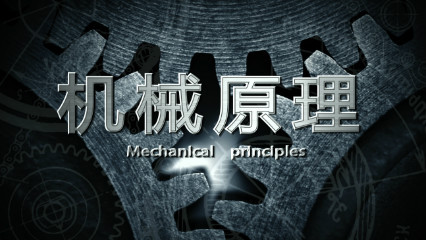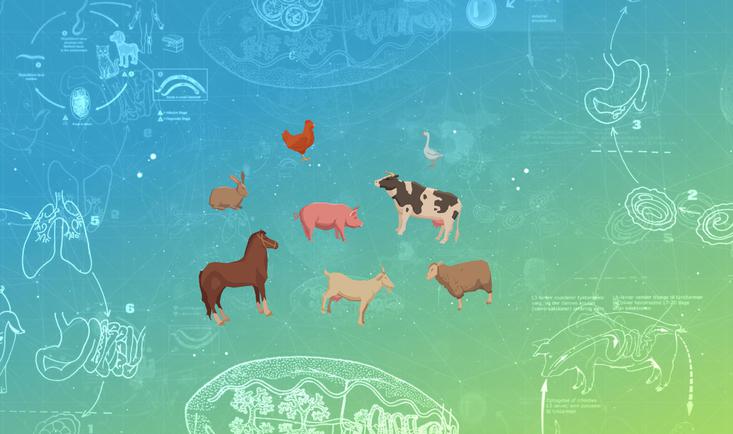
当前课程知识点:Methodology of Scientific Research > Lecture 8 Invention and Patent Application > Section 8.2 Patent Types and Applications > 8.2.2 Writing Patent
返回《Methodology of Scientific Research》慕课在线视频课程列表
返回《Methodology of Scientific Research》慕课在线视频列表
同学们好
我们一起来学习专利撰写
专利是法律文书的一种
有特定的撰写格式
专利法第26条规定了各种类型专利的撰写
内容和格式
以专利说明书和专利要求书为例
解释如下
一
专利说明书
专利说明书包括专利题目
技术领域
背景
技术
发明内容
附图说明
具体实施方式和实施力
先来看看专利题目
专利题目没有法律效力
但是作为题目信息
不得过于随便
应当清楚简洁小于25个字
采用所属技术领域通用的技术术语
最好采用国际专利分类表中的技术术语
只能表明技术内容
不推荐
写发明的区别
技术特征
技术领域是指发明或者实用新型
直接所属
或者直接应用的具体技术领域
而不是上位的或者相关的技术领域
也不是发明
或者实用新型本身
背景技术要求具有相对充分性
写明就申请人所知
对专利的理解
检索
审查有用的背景技术
最好引证
反映这些背景技术的文献
尤其是独立权利要求
前序部分的技术特征
需要引证
与专利申请最接近的现有技术文件
指出背景技术中存在的问题和缺点
但是仅限于专利技术方案所解决的问题和缺点
相关的发明内容
这部分包括发明目的
技术方案和有益效果三项
发明目的是针对现有技术中存在的缺陷或不足
用正面的客观而有根据的反应
要解决的技术问题
技术方案
记录发明要解决的技术问题
所采取的技术方案
技术方案要求
应当与权利要求所限定的相应的技术方案相
一致
至少写明独立权利要求的技术方案
包括解决技术问题所必须的全部必要技术特征
必要时说明必要技术特征总和与发明取得的
技术效果之间的关系
可以通过发明的附加技术特征的描述
反应
对其所做进一步改进的从属权利要求的技术
方案
技术方案的写法有两种
一种是物品类
主要写形状
构造
加主要连接关系
对于方法类是步骤加顺序的写法
三
有益效果
对有益效果有如下要求
要求清楚客观的写明
与现有技术相比所具有的有益效果
该有一效果是由构成发明的技术特征直接带来
的
或者是由技术特征必然产生的
有益效果写法包含两点
1点是分析发明结构特点和理论说明相结合
二是列出实验数据予以说明
附图说明
说明书有附图的
应当写明各附图的图名
并且对图示的内容做简要说明
具体实施方式
它是实现发明的优选的具体实施方式
用于充分公开理解和实现发明
用于支持和解释权利要求
具体实施方式要求
第一写具体
不能采用引证其他文献
第二
要求写完整所属领域技术人员
按照所述内容可重现发明
具体实施方式的描述应当与发明或者实用新型
的技术方案相应
并对权利要求的技术特征给予详细说明
以支持权利要求
当权利要求相对于背景技术的改进
涉及数值范围时
通常应给出两端值附近的实施力
在权利要求中出现概括性的技术特征时
应给出几个实施方式
第2部分是权利要求书
这部分
包括独立权利要求和从属权利要求
独立权利要求
从整体上反映发明或者实用新型的技术方案
记载解决技术问题所需的必要技术特征
一份权利要求书中独立权利要求
保护范围最宽
是侵权判断的依据
从属权利要求包含所从属的权利
要求的所有技术特征
用附加技术特征
对所从属的权利要求的技术方案作进一步限定
从属权利要求保护范围
在所从属的权利要求
保护范围之内
有独立权利要求撰写的方式
一般是两段式写法
前序部分加特征部分
前序部分
写明要求保护的发明
或者实用新型技术方案的主题名称
以及最接近的现有技术
公有的
必要技术特征
特征部分
使用
其特征是或者类似的用语
写明区别技术特征
这些特征和前序部分的特征
一起限定发明或者实用新型的保护范围
从属权利要求书的写法
一般采用两段式写法
引用部分加限定部分
引用部分
写明引用的权利要求的编号及其主题名称
限定部分写明附加技术特征
-Section 1.1 Basic Concepts of Scientific Research
--1.1.1 Basic Concepts of Research
-Section 1.2 General Procedure of Scientific Research
--1.2.3 Process of Natural Science
--1.2.4 Process of Social Science
--1.2.5 Process of Technologial Science
-Section 1.3 How to Prepare for Scientific Research
--1.3.1 Motivation of Research
-Test-Lecture #1
-Section 2.1 Types and Sources of Research Project
-Section 2.2 Principles and Methods of Topic Selection
--2.2.1 Principle of Topic Selection
--2.2.2 Methods of Topic Selection
--2.2.3 Procedure and Strategy of Topic Selection
-Section 2.3 Information Collection of Project
--2.3.1 Type, Collection and Search of Information
-Test-Lecture #2
-Section 3.1 Typical Research Methods
--3.1.1 Level of Research Method
--3.1.2 Concept of Research Method
--3.1.3 Typical Research Methods
-Section 3.2 Typical Thinking Modes
--3.2.1 Thinking and its Characteristics
--3.2.2 General Innovative Thinking
--3.2.3 Typical Thinking Modes
-Section 3.3 Analysis of Research Cases
--3.3.1 Question Description and Concept
--3.3.2 Three-Level Theory of Problem
--3.3.3 Train of Question Consciousness
-Test-Lecture #3
-Section 4.1 Research-oriented Scientific Design
--4.1.1 General Scientific Design
--4.1.3 Example of Research Design
--4.1.4 Other kinds of Research Design
-Section 4.2 Experimental Scientific Research Design
--4.2.4 Example of Experimental Design
-Section 4.3 Application-oriented Scientific Design
--4.3.1 Basic Concepts and Significance
--4.3.3 Example of Applied Design
--4.3.4 Train of Research Skills
-Test-Lecture #4
-Section 5.1 Initial Entry into the Research Group
--5.1.2 Consider Research Outline
-Section 5.2 Analysis of Scientific Research Cases
--5.2.1 Example of Correct Topic Selection
--5.2.2 Example of Team Cooperation
--5.2.3 Test of Non-invasive PDM
-Section 5.3 Research-based Learning and Research
--5.3.1 Overview of Research Learning
--5.3.2 Research-based Learning
--5.3.3 Research Train for Undergraduates
-Test-Lecture #5
-Section 6.1 Scientific Research Strategy and Tactics
--6.1.1 Strategy in Research Work
--6.1.2 Tactics in Research Work
--6.1.3 Research Group and Management
-Section 6.2 Scientific Research Tactful Operation
--6.2.3 Typical Research Planning
-Section 6.3 Discrimination of Research Obstruction
--6.3.2 Origin of Research Obstruction
--6.3.3 Case of Research Obstruction
--6.3.4 Strategy to Remove Obstruction
-Test-Lecture #6
-Section 7.1 Research Papers and Writing
--7.1.2 Writing Research Paper
-Section 7.2 Rules for Submission and Publication
--7.2.1 Preparing for Contribution
--7.2.2 Process of Publication
--7.2.3 Strategy of Contribution
-Section 7.3 Examples and Analysis of Paper
--7.3.1 Basic Structure of Paper
--7.3.3 Introduction, Main Content and Conclusion
-Test-Lecture #7
-Section 8.1 Introduction of Invention and Creation
--8.1.1 Generality of Invention
--8.1.2 Principle of Invention
--8.1.3 Risk and Protection of Invention
-Section 8.2 Patent Types and Applications
--8.2.1 Characteristics and Types of Patent
--8.2.3 Process of Applying Patent
-Section 8.3 Patent Examples and Analysis
--8.3.1 Example of Invention Patent
--8.3.2 Example of Utility Model Patent
--8.3.3 Example of Design Patent
-Test-Lecture #8
-Section 9.1 Characteristics, Types and Titles of Academic Conferences
--9.1.1 Characteristisc of Academic Conference
--9.1.2 Types of Academic Conference
--9.1.3 Title of Academic Conference
-Section 9.2 Basic Elements and Report Types of Academic Conferences
--9.2.1 Basic Elements of Conference
--9.2.2 Types of Conference Report
-Section 9.3 Main Points, Syntax and Summary of Academic Reports
--9.3.1 Writing and Accepting Conference Paper
--9.3.2 Exercise before Reporting
-Test-Lecture #9
-Section 10.1 Character and Type of Researcher
--10.1.1 Basic Moral of Researcher
--10.1.2 Moral Outlook of Researcher
--10.1.3 Talent Type and Innovative Quality
-Section 10.2 Research Ethics and Academic Norms
--10.2.1 Generality of Research Morality
--10.2.3 Monitoring Measure of Research
-Section 10.3 Research Relationship and Incentive Mechanism
--10.3.1 Generality of Research Relation
--10.3.2 Typical Research Relation
--10.3.3 Research Incentive System
-Test-Lecture #10




